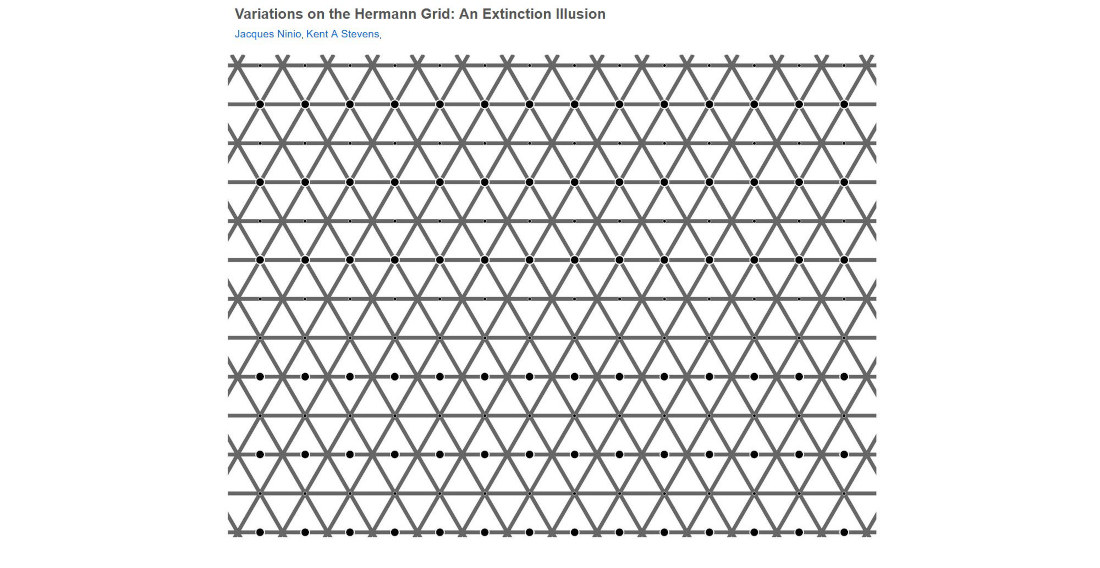Both the top and bottom half of the image have the same number of dots, but the ones on top appear to disappear unless you’re looking at them. This is an example of a Hermann grid illusion, an optical illusion first documented by Ludimar Hermann in 1870. According to SharpBrains, “the illusion results from retinal cells adjusting the brightness of an image by adjusting the intensity of the light signal in many small sections, which allows you to see a wide range of both bright and dark details in the same image.” I don’t like it. I don’t like my eyes playing tricks on me. Or my friends playing tricks on me, so if you’re hiding around the corner ready to smack me in the face with a plate of shaving cream, you can forget about ever celebrating our one year friendiversary.

What optical sorcery is this?!
Eye-Melting Optical Illusion Makes Dots Disappear
hite
- What The, freaky deaky, Science
- December 14, 2022

Things people say
- scoobydoo on Compilation Of Children Running Into Funhouse Mirrors
- 1-Ton on Timelapse Of Walton Goggins Having His Ghoul Face Applied For Fallout
- Eric Ord on Find The Frog
- Kent on Maserati SUV Driver Mistakes His Vehicle For Functional Off Roader, Gets Stuck In Flood
- born in space on Mouse Sneaks Out Of Hiding Spot In Stove To Steal An OREO
- April 22, 2024
- April 19, 2024
Related
Related contents and articles.
Related Posts
Finally, A Paintball Firing Security Camera
- Video, problem solving, products, reimagining things, What The
- April 25, 2024
Confusingly Designed Restroom Signs Spark Controversy In China
- What The, language, reimagining things, Video, woopsie
- April 18, 2024
Freaky Deaky 4-Legged Furby Mutant
- freaky deaky, making things, robots, sure why not, Video, What The
- April 16, 2024






